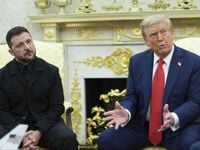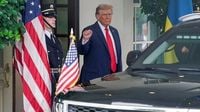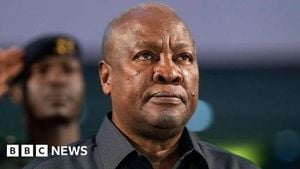In a flurry of public statements and Oval Office meetings this August, former U.S. President Donald Trump has repeatedly claimed to have ended as many as six wars during his presidency—a boast that has been met with skepticism, rebuttals, and outright denials from both international leaders and independent analysts. As Trump met with Ukrainian President Volodymyr Zelenskyy and later Russian President Vladimir Putin, he insisted that his diplomatic prowess had brought peace to conflict zones ranging from South Asia to the Balkans, and from Africa to the Middle East. But the facts on the ground, and the responses from those involved, tell a far more complicated story.
On August 19, 2025, Trump told reporters in the Oval Office, "If you look at the six deals that I settled this year, they were all at war. I didn’t do any ceasefires." According to The Economic Times, he specifically cited the Russia-Ukraine conflict as the "toughest one" to resolve, contrasting it with what he described as previous diplomatic successes, including ending hostilities between India and Pakistan. Trump’s claims did not stop there; on his social media platform and in meetings with European leaders, he reiterated that he had brought lasting peace to six global hotspots.
Yet, when pressed for specifics, inconsistencies emerged. As Geographical reported, Trump has variously claimed to have ended five, six, and even seven wars, sometimes including countries like Armenia and Azerbaijan, or referencing the Abraham Accords, which predate his current term. The White House has not released a formal list, but Trump and his allies have pointed to disputes involving Cambodia and Thailand, India and Pakistan, Iran and Israel, the Democratic Republic of Congo (DRC) and Rwanda, Serbia and Kosovo, and Egypt and Ethiopia.
Take the case of India and Pakistan. In May 2025, the two nuclear-armed neighbors experienced their worst military confrontation in decades, with dozens killed over four days of intense fighting. Trump announced, “After a long night of talks mediated by the United States, I am pleased to announce that India and Pakistan have agreed to a full and immediate ceasefire. Congratulations to both countries on using common sense and great intelligence.” But, as Geographical and The Economic Times both note, Indian officials immediately dismissed the idea that the U.S. played any meaningful role. India’s Defence Ministry called the claims “completely incorrect and baseless,” stating that India halted operations only after achieving its objectives, not due to American pressure or mediation. External Affairs Minister S Jaishankar further emphasized there was no third-party intervention during Operation Sindoor, the codename for India’s military response.
Similar patterns emerge in other conflicts. In July 2025, Cambodia and Thailand agreed to an unconditional ceasefire after border clashes that killed at least 33 people and displaced tens of thousands. Trump threatened to withhold trade deals unless the fighting stopped, and both sides eventually agreed to a truce. Nevertheless, as Geographical reports, the ceasefire remains fragile, with ongoing tensions and sporadic violations. Trump himself admitted the situation was complex, stating, “The call with Cambodia has ended, but expect to call back regarding war stoppage and ceasefire based on what Thailand has to say. I am trying to simplify a complex situation!”
The Democratic Republic of Congo and Rwanda have endured decades of violence fueled by ethnic tensions and competition over resources. In June, a peace deal was signed in Washington, with the U.S. mediating. However, as Geographical and MSNBC highlight, fighting continues in the region, with Rwanda-backed rebels missing a key peace deadline just a week before Trump’s latest claim. The U.S. is also reportedly considering investments in the DRC’s mineral-rich areas, raising questions about the motivations behind its diplomatic efforts.
Trump also points to the Serbia-Kosovo dispute as a feather in his cap. In September 2020, the two sides signed economic agreements at the White House, focusing on infrastructure and energy. While the Trump administration hailed this as a "historic breakthrough," the agreements were light on political reconciliation. Tensions have persisted, with explosions and clashes in northern Kosovo as recently as November 2024. As Geographical notes, the absence of a formal conflict and Serbia’s denial of imminent war cast doubt on Trump’s peacemaker narrative.
The Iran-Israel conflict presents another complicated picture. After Israeli strikes on Iranian nuclear sites and retaliatory attacks from Iran, Trump ordered U.S. strikes on Iranian facilities before brokering a ceasefire. He later declared, "It has been fully agreed by and between Israel and Iran that there will be a complete and total ceasefire." However, as Geographical reports, these aggressive measures and the ongoing volatility in the region suggest that peace remains elusive.
On the Egypt-Ethiopia front, the dispute over the Grand Ethiopian Renaissance Dam has simmered for years. Trump has offered to mediate, proposing that the U.S. could help broker a "just agreement." Yet, negotiations remain slow and inconclusive, with no final deal reached as of August 2025. Ethiopia has previously denounced Trump’s suggestions that Egypt might blow up the dam as misguided and inflammatory.
Throughout these episodes, Trump has shifted his rhetoric. In the weeks before meeting with Putin and Zelenskyy, he repeatedly called for a ceasefire in Ukraine, only to later dismiss ceasefires as inadequate. “I don’t think you need a ceasefire,” he told Zelenskyy, instead touting his supposed record of achieving broader peace agreements. But, as MSNBC points out, most of the situations Trump claims to have resolved were, in reality, temporary ceasefires—if that. In many cases, violence resumed, negotiations stalled, or the underlying issues remained untouched.
Critics argue that Trump’s boasts are not just inflated but also misleading. As MSNBC put it, "Trump not only can’t keep track of his own dubious claim, and not only can he not back it up with specifics, he’s also flubbing the details of his own boast in ways he really ought to understand." The lack of transparency around which conflicts he includes, and the ongoing instability in many of these regions, further undermine the credibility of his claims.
Despite the headlines, the reality is that most of the conflicts Trump claims to have ended remain unresolved, with fragile ceasefires, simmering tensions, and, in some cases, outright denials of U.S. involvement. The world’s hotspots are not so easily cooled, and the search for lasting peace continues—regardless of presidential boasts.






